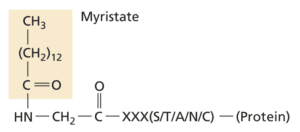

The common cold is an infection of the upper respiratory tract that may be caused by many different viruses, but most frequently by rhinoviruses. A compound that inhibits a cell enzyme and blocks rhinovirus replication has the potential to be developed into an antiviral drug (link to paper).
The common cold is an annoying but not typically a serious infection. It can lead to serious disease in patients with asthma, chronic obstructive pulmonary disease, and cystic fibrosis. Because there are so many different serotypes of rhinoviruses, reinfections are common. This diversity has also hindered the development of a rhinovirus vaccine.
There has been some effort to develop antiviral drugs to treat rhinovirus infections, but none have been approved for use in humans. They include drugs that target the rhinovirus capsid and block uncoating of the viral RNA, and inhibitors of viral proteases.
A different approach to blocking viral replication is to target cell proteins needed for viral replication. This approach is tricky because such proteins are needed for cell functions, and inhibiting them might cause unacceptable side effects.
A potential cell target for inhibiting rhinovirus reproduction are the cellular enzymes N-myristoyltransferases (NMT). These enzymes covalently attach a molecule of the fatty acid myristate to the N-terminus of the viral capsid protein VP0 (pictured). Myristoylation of VP0 has been shown to be essential for the assembly of poliovirus and is known to also occur during rhinovirus infection.
Several small molecule inhibitors of NMT were developed that potently block rhinovirus replication in cells in culture by blocking the assembly of virus particles. They impair virus production even when added up to three hours post-infection, and they have no effect on the viability of cells.
Because myristolylation is essential for rhinovirus replication, it is difficult to envision how viral mutants resistant to the drug could emerge. However resistance it is not impossible: for example, poliovirus mutants resistant to brefeldin, a drug that inhibits protein transport from the ER to the Golgi, have been identified.
There are at least two hurdles that must be overcome before NMT are approved for use. The first concerns side effects of using NMT inhibitors in humans. To address this issue, the authors treated cells with the NMT inhibitors for 24 hours, then washed away the compounds. Within 24 hours the NMT activity of the cell had recovered. This result shows that the enzymes can recover from transient inhibition.
This result is significant because it suggests that dosing could be restricted to the start of the infection for only the few hours needed to block viral reproduction. Furthermore, the inhibitors could be delivered by inhaler to respiratory tract. Chemical modification of the compounds might be done to limit their movement outside of the lung.
Another hurdle comes from the fact that that antiviral therapy will only be effective if administered during the earliest hours after infection. Exactly how soon after infection onset can only be determined by clinical studies of the inhibitors in infected humans. Rapid clinical assays for detecting infection with rhinoviruses are not currently available, but could certainly be developed. However, giving antiviral drugs within 24 hours of infection onset would still be a challenge: the patient would not only have to sense the onset of a cold, but make an appointment for a clinical test, obtain the results, and then get a prescription for the drug.
It seems most likely that the target groups for the use of rhinovirus inhibitors would be individuals with asthma, COPD, or cystic fibrosis. These individuals may be attuned to the exact moment when they sense the onset of a common cold as their noses begin to drip or their throats become scratchy. These individuals might keep inhalers containing NMT inhibitors in their homes ready to use for just such a situation. This scenario bypasses the use of a rhinovirus diagnostic assay, and consequently if the cold is not caused by a rhinovirus the treatment will not be effective. Because rhinoviruses cause the majority of common colds it could be a reasonable approach.

Pingback: Blocking rhinovirus infection by inhibiting a cell enzyme - Virology